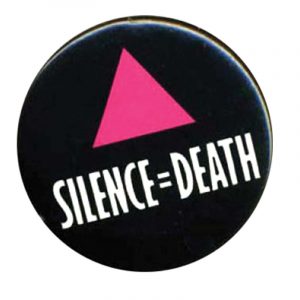[media-credit name=”COURTESY ACT UP NEW YORK ARCHIVE” align=”alignleft” width=”300″] [/media-credit]By MICHAEL SELTZER | Greenwich Villagers have much in our history to give us an immense sense of pride. Leading writers, poets, entertainers and humanitarians, including Eleanor Roosevelt, Mark Twain, Bob Dylan, Barbra Streisand, Edna St. Vincent Millay and Willa Cather, to name just a few, can all claim important connections to our blocks. In 1981, we started on the road to a new moniker — the most notable “neighborhood of conscience” in the nation and perhaps the world.
[/media-credit]By MICHAEL SELTZER | Greenwich Villagers have much in our history to give us an immense sense of pride. Leading writers, poets, entertainers and humanitarians, including Eleanor Roosevelt, Mark Twain, Bob Dylan, Barbra Streisand, Edna St. Vincent Millay and Willa Cather, to name just a few, can all claim important connections to our blocks. In 1981, we started on the road to a new moniker — the most notable “neighborhood of conscience” in the nation and perhaps the world.
It was then when our community began to bear witness to the impact of the most devastating disease of our lifetime. In the 30-plus subsequent years, more than 100,000 New Yorkers would lose their lives to what would become known as Acquired Immune Deficiency Syndrome.
Christopher Tepper and Paul Kelterborn found their way to the Village like their fellow Midwesterners Eileen and Ruth Sherwood, of “My Sister Eileen” fame, did 70-plus years before. They represent a generation of gay men who have lived their entire lives in the shadows of the AIDS pandemic. When they arrived in our city, they found themselves both surprised and angry that there was so little historical evidence of the greatest public health threat of our time.
Not unlike the founders of the High Line, Chris and Paul had a vision. They decided to create a community park and learning center in the neighborhood whose response to the pandemic set an example for the nation and the world.
After all, it was Greenwich Village where AIDS took its greatest toll from the very earliest days. Before very long, everyone in the Village would lose loved ones, cherished friends, colleagues and neighbors. St. Vincent’s Hospital, under the leadership of the Sisters of Charity, became the destination for men, women, children and infants stricken by AIDS-related conditions.
Throughout its history, the Village has prided itself as a haven for artists, bohemians, intellectuals and activists. It’s role as a safe haven can be traced back to 1822 when thousands of Lower Manhattan residents fled here to escape a yellow fever epidemic.
Our finest hour as a community, however, arguably could have been during the era of AIDS. When the responses of other locales to the AIDS crisis in their midst ranged from intolerance to outright hostility, our “Village” came together united in love, support, compassion and activism. We were all “affected” by AIDS. Villagers from every walk of life overnight became care partners, activists and lifelines to individuals who were in many cases homebound and jobless.
A number of our neighbors founded remarkable nonprofit organizations, such as GMHC; the Lesbian, Gay, Bisexual and Transgender Community Center; Housing Works; and ACT UP. Pre-existing organizations, like VillageCare, expanded their array of support services to help both the infected and the affected. Our myriad daily efforts inspired other communities that soon would also face the same scourge.
Today, we have a once-in-a-lifetime opportunity to pay tribute to our neighborhood and to impart our history to future generations.
Once all the approvals are secured, Greenwich Village will have a stunning, new community park, a world-class, basement-level learning center, and a new gathering place for our community’s use. This is a cause worthy of all Villagers’ support.
Seltzer is a member, AIDS Memorial Park Steering Committee

















